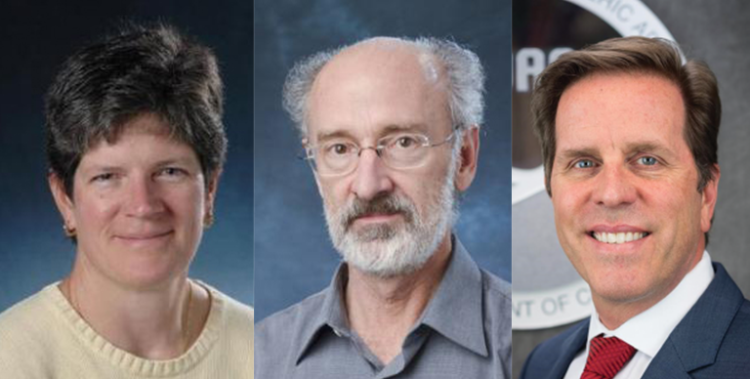Interdisciplinary research takes new approach to solar flare prediction

A new interdisciplinary project from the National Science Foundation aims to improve our understanding of solar flares and our ability to predict them.
The three-year study is led by Professor Elizabeth Bradley from the Department of Computer Science with assistance from Professor James Meiss in the Applied Math Department and Thomas Berger, director of the Space Weather Technology, Research and Education Center.
Solar flares are a main feature of severe space weather storms, which can interrupt radio and satellite communications, airline operations and, in the largest forms, cause a blackout in the electric power grid.
Berger said there is no reliable method for forecasting these disruptive solar eruptions. Much like earthquakes, they are always a surprise, and our ability to mitigate their effects on various key aspects of daily life is hampered by a lack of actionable warning systems.
“Our project will apply the tools of computational geometry and topology and machine learning in ways that have not previously been explored to produce a much more robust, repeatable and reliable system for solar flare forecasting,” he said.
Specifically, the project aims to enhance the skill of machine learning systems used to make these types of predictions. Berger said computer science PhD candidate Varad Deshmukh will be a big part of the work.
Deshmukh will develop novel topological data analysis and computational geometry methods and combine them with machine learning methodologies to produce a solar flare prediction system. The goal is to then transition that system to operational space weather forecasting centers in the U.S. and Europe.
The Space Weather Technology, Research and Education Center is a multidisciplinary center within the College of Engineering and Applied Science. The center, a main component of the university’s Grand Challenge, brings together diverse research on space weather occurring across the university and the Front Range.
Berger said this is highly interdisciplinary work, with the center serving as a good focal point for this project and other related work on campus.
“This work combines solar physics and plasma physics research with data science and forecasting methodologies to produce a system that can be integrated into operational space weather forecasting centers,” he said. “The ability to combine expertise in solar and space physics in our aerospace department with the data science expertise in the computer science and applied mathematics departments was key to winning the NSF funding for this.”

